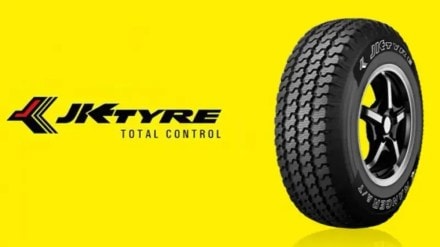JK Tyre & Industries, which posted muted revenues in FY25, expects double-digit growth this fiscal on the back of stronger tyre demand expected on the back of higher automobile sales across segments after the recent GST rate cut.
Boost from GST Cuts
“The tyre demand outlook for this year is quite strong,” Anshuman Singhania, managing director, JK Tyre & Industries, told reporters on Thursday. He said the GST cut, effective September 22, is expected to lift auto industry sales by 8-9%, led by consumer-facing segments such as passenger cars, two- and three-wheelers, while the farm sector is also showing a rural uptick.
Singhania noted that the company is well-positioned with both original equipment manufacturers (OEMs) and the replacement market to benefit from the post-GST demand. “The second half is looking good. While the commercial vehicle sector was earlier projected to grow in low single digits, it now appears set for mid-single digit growth, while passenger cars and the farm sector are poised for high single-digit growth. Two- and three-wheelers are already buoyant,” he said.
“We are confident of delivering double-digit revenue growth this fiscal,” Singhania added.
JK Tyre’s consolidated revenue from operations in FY25 declined marginally to `14,692.92 crore from `15,001.78 crore in FY24. About 60% of the company’s revenue comes from the replacement market, with the balance 40% from OEMs.
To meet the expected surge in demand post-September 22 and ahead of the festive season, the company is building inventory. Earlier this month, the GST Council cut rates on several product categories to boost consumption: GST on two-wheelers (up to 350cc) and entry-level small cars was reduced to 18% from 28%, on tractors above 1,800cc to 5% from 12%, and on trucks and commercial vehicles to 18% from 28%.
On input costs, Singhania said raw material prices had risen by 10% last year, accounting for nearly 67% of tyre costs, leading to a 7% overall price increase. “We were able to take a 4.5% price hike last year, leaving a 3.5% gap. However, in Q1FY26 compared to Q4FY25, prices fell 2.5%, offsetting some of last year’s increases. We expect raw material prices to remain range-bound in the coming quarters,” he said.
Mitigating challenges and diversifying strategies
JK Tyre, with a capacity of 35 million tyres across 11 manufacturing plants, imports about half of its rubber requirements.
The company has also diversified its export strategy to mitigate the impact of 50% tariffs in the US market. “We are serving the US through our Mexico plant, where tariff implementation has been postponed by about 90 days. We are also leveraging the US-Mexico-Canada Agreement, which provides for nil duty,” Singhania said.
JK Tyre exports to the UAE and Europe, and is the largest exporter of truck radials to the EU and the UK. The company is now exploring newer markets in Africa and Asia, with exports contributing 12-15% of total revenue.
